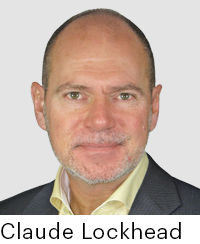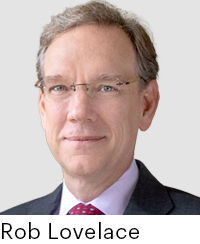Canadian defined benefit pension plans posted their weakest quarterly returns in three decades in second quarter 2022, according to the RBC Investor & Treasury Services’ All Plan Universe.
The Plan Universe finds that Canadian pension plans delivered negative returns in public market asset classes across the board during the past quarter. Global economic health, stock market sell-offs, and rising bond yields have weighed heavily on defined benefit (DB) plan assets, RBC Investor & Treasury Services notes. Plan assets declined 8.6 per cent in Q2 2022, bringing the year-to-date total return to -14.7 per cent, RBC adds.
The plan manager notes that the decline in the second quarter of 2022 was the largest since the 8.6 per cent decline in Q3 2008. That quarter broke the record for the lowest quarterly return RBC ever reported since it began tracking DB plan performance in 1994.
Ukraine, inflation and variants
“Uncertainty in the global economic landscape–particularly surrounding the war in Ukraine, substantial inflation, higher interest rates imposed by the central banks across the globe and a new strain of Covid-19–contributed to this outcome,” said Niki Zaphiratos, Managing Director, Asset Owners, RBC Investor & Treasury Services.
Canadian pension plan returns for the global equity asset class lost 12.2 per cent in the second quarter of 2022 and declined 18.5 per cent year-to-date. In the fixed income asset class, Canadian pension plans had a -9.8 per cent return in the second quarter and a 19.0 per cent decline year-to-date. Canadian equity returns for plans tracked by RBC sank 11.3 per cent in the second quarter and were down 8.1 per cent year-to-date.
“Though the Canadian equity market has benefitted from a large exposure to energy stocks (26.2 per cent year-to-date), it lost ground over the quarter, as sectors such as financials and materials were beaten down due to concerns over high interest rates and slow economic growth,” Zaphiratos explained.
Liabilities protected by rising rates
“The uptick of long-term bond yields, however, actually improved plans' solvency ratios,” she continued.
Benefits consultants echoed this improvement in the second quarter. Despite falling asset values and record inflation, the financial condition of defined benefit pension plans improved in the second quarter of 2022, Mercer noted.
The Mercer Pension Health Pulse increased to 109 per cent from 108 per cent as at June 30, 2022. The index measures the median solvency of the DB plans in Mercer’s database.
Aon reached a similar finding, noting that the financial health of Canadian pension plans improved very slightly in the second quarter of 2022. Its aggregate funded ratio for Canadian pension plans in the S&P/TSX Composite Index increased from 100.5 per cent to 101.5 per cent in the last three months ending June 30, 2022. The index was 96.9 per cent at the beginning of the year.
While equity markets continued to be rocked by volatility in July, rising interest rates were a huge boon for plans. “Despite the significant negative returns on the asset side of the equation, the steep rise in bond yields has had a very favourable impact on the financial position of most DB plans,” said F. Hubert Tremblay, senior advisor in Mercer's wealth practice.

Executive Partner, Wealth Solutions, at Aon, Claude Lockhead believes that rapidly rising interest rates drove down liabilities, “offsetting the poor asset performance over the quarter.” Pension assets lost 11.9 per cent in Q2 2022, Aon reports.
According to Bank of Canada statistics, the typical long-term Government of Canada bond rate began 2022 at 1.85 per cent and peaked at 3.35 per cent on June 15, 2022. It then declined to 2.82 per cent on July 26, 2022.
Financial market turmoil
“With the increased risk of a recession, continuing conflict in Ukraine, historic high levels of inflation, and the volatility of the financial markets, DB plans’ funded positions can be expected to remain extremely volatile,” Tremblay points out.
Lockhead expects plan sponsors to continue their de-risking activities “to further protect plans' funded positions as they navigate volatility.” He believes sponsors will do this either through strengthening interest rate hedges or through risk transfer activities, “such as buy-ins and buy-outs.”
Upturn ahead?

Chief Strategist, Senior Economist and Vice President, Asset Allocation, Portfolio Manager at iA Investment Management (iAIM), Sebastien McMahon reported a positive week at the close of trading on Thursday, July 28, 2022.
In his economic overview for the month of July, he called the past week quite positive on the stock and bond side. “Interest rates are starting to move down. Have we seen the peak in interest rates in 2022? If so, we'll see more attractive returns on the bond portfolio side,” McMahon predicted.
He noted that the FTSE TMX Canada Long Term Bond Index returned 1.57 per cent for the week ending July 28, although the index is down 16.42 per cent year-to-date. It would be surprising to see this number move back into positive territory by the end of the year, McMahon says.
It was another positive week for equities, iAGP's Chief Strategist and Senior Economist continues. The Canadian dollar's appreciation by nearly 1 per cent was a headwind for foreign equity performance. With a return of 2.58 per cent, the Toronto Stock Exchange's S&P/TSX Index outperformed the U.S. S&P 500, which returned 1.94 per cent in Canadian dollars. In local currency, however, the S&P 500 returned 2.81 per cent, the NASDAQ returned 2.78 per cent, the EAFE Europe and Asia Index returned 0.78 per cent and the MSCI Emerging Markets Index returned 0.36 per cent.
“We're clearly in a rally on the equity side,” McMahon says. He thinks it is still too early to assume the economy has reached bottom. Inflation continues to be an important issue in July, he adds, noting that it accelerated again: 9 per cent on the U.S. side and 8.1 per cent in Canada. Although rising gasoline prices pushed inflation higher in June, the economist is seeing early signs of a peak. “The price at the pump has fallen in July, giving consumers some respite,” he says, “if it’s not the peak we're starting to approach it.”
Recession: A necessary evil

Rob Lovelace, Vice Chair and President of Capital Group, expects a “healthy” recession within two years. “For all the concerns about it, I see a moderate recession as necessary to clean out the excesses of the past decade,” he wrote in the mid-year 2022 edition of Outlook. “You can’t have such a sustained period of growth without an occasional downturn to balance things out. It’s normal. It’s expected. It’s healthy,” he explains
In the report, Capital Group explains that powerful trends have brought the world's major economies back to where they were just before the pandemic, firmly in late-cycle territory. Capital Group also expects increased volatility as the Federal Reserve fights inflation.
Lovelace believes that for investors, holding a balanced all-weather investment portfolio makes sense in any environment, “particularly this one.” Outlook 2022 emphasizes that planning is crucial in during times of extreme uncertainty. Capital Group’s Night Watch team of economists must weigh several questions: Will the war in Ukraine escalate or end? Will inflation rise or fall, and will a global recession ensue or growth resume?
The Capital Group report describes the late cycle as a period of shrinking labour markets and soaring costs. This period is also accompanied by contracting corporate profit margins and tightening central bank policy.
Outlook 2022 also lists the signs of a recession: economic activity declines, credit contracts and unemployment rises.




